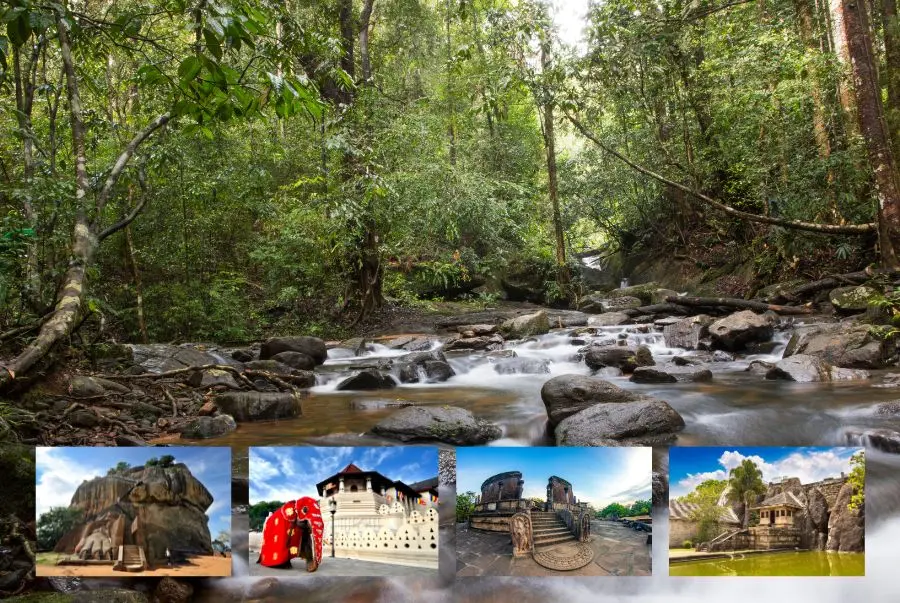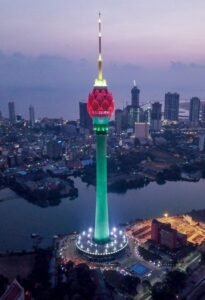Sri Lanka, with its stunning landscapes, rich culture, and welcoming people, is a fantastic destination for solo travelers. Whether you’re looking to explore ancient temples, trek through lush rainforests, or relax on pristine beaches, Sri Lanka offers endless opportunities for adventure, relaxation, and self-discovery.
Traveling solo can be an incredibly rewarding experience, allowing you the freedom to explore at your own pace and create your own itinerary. In this guide, we’ll provide you with essential tips for solo travel in Sri Lanka, from safety advice and budget tips to must-see destinations and how Tranz Ceylon Tours & Travels can enhance your solo journey with personalized services.
1. Why Sri Lanka is Perfect for Solo Travelers
Sri Lanka offers a variety of experiences that appeal to solo travelers. With its welcoming culture, easy transportation, and stunning natural beauty, it’s a destination where you can explore confidently and feel at ease.
- Safe Destination: Sri Lanka is considered a relatively safe country for solo travelers. Its smaller size and well-established tourist infrastructure make it easy to navigate.
- Friendly Locals: Sri Lankans are known for their hospitality, and you’ll often find that locals are happy to help, offering directions or recommendations for the best places to visit.
- Diverse Experiences: Whether you’re seeking adventure in the hills, relaxation by the beach, or spiritual experiences in temples, Sri Lanka has something for every type of solo traveler.
2. Safety Tips for Solo Travelers in Sri Lanka
While Sri Lanka is generally a safe place for solo travelers, there are a few things to keep in mind to ensure a smooth and enjoyable trip.
1. Stay Alert in Crowded Places: Like in any tourist destination, keep an eye on your belongings, especially in crowded areas like markets, public transport, and festivals.
2. Use Reputable Transport: Opt for trusted forms of transportation like Tuk-Tuks, local buses, or private drivers arranged through Tranz Ceylon Tours & Travels for peace of mind. Always negotiate the price beforehand with Tuk-Tuk drivers.
3. Stick to Well-Lit Areas at Night: It’s always a good idea to stick to well-lit and busy areas after dark, especially when walking alone. Colombo and Kandy have vibrant night scenes, but avoid quiet or poorly lit streets late at night.
4. Keep Emergency Numbers Handy: Familiarize yourself with emergency contact numbers in Sri Lanka, including local police and medical services.
3. Best Destinations for Solo Travelers in Sri Lanka
Sri Lanka is a diverse country with many regions offering unique experiences. Here are some of the best places to explore as a solo traveler:
3.1. Colombo – The Bustling Capital
Why Visit: Colombo, the capital city, is a blend of colonial architecture, modern skyscrapers, and traditional markets. It’s a great starting point for your journey, offering easy access to both coastal and inland destinations. The city also has great food, shopping, and a lively cultural scene.
Top Activities:
- Visit Galle Face Green for a sunset stroll.
- Explore the Colombo National Museum and Gangaramaya Temple.
- Enjoy the local street food at Pettah Market.
3.2. Kandy – Culture and Nature in the Heart of Sri Lanka
Why Visit: Kandy, a UNESCO World Heritage city, is home to the Temple of the Tooth, one of the most sacred places for Buddhists. It’s surrounded by lush hills and tea plantations, offering plenty of hiking opportunities and serene lake views.
Top Activities:
- Visit the Temple of the Tooth and attend a Puja (Buddhist ceremony).
- Walk around Kandy Lake and explore the Royal Botanical Gardens.
- Take a scenic train ride from Kandy to Ella for breathtaking mountain views.
3.3. Ella – Adventure and Tranquility
Why Visit: Nestled in the southern hills, Ella is a solo traveler’s paradise, known for its natural beauty, adventure activities, and laid-back vibe. It’s a fantastic destination for trekking, waterfalls, and exploring tea plantations.
Top Activities:
- Hike up Ella Rock for panoramic views of the surrounding landscape.
- Visit Ravana Falls and enjoy the tranquil surroundings.
- Explore the Nine Arches Bridge, a famous photo spot.
3.4. Mirissa – Beach and Whale Watching
Why Visit: For those seeking relaxation, Mirissa offers a beautiful beach and a laid-back atmosphere. It’s also a great place for whale watching, where you can take boat tours to see blue whales and dolphins in the wild.
Top Activities:
- Relax on the beach or take part in water sports.
- Book a whale-watching tour for an unforgettable experience.
- Visit the nearby Unawatuna Beach for more serenity.
3.5. Sigiriya – A UNESCO World Heritage Adventure
Why Visit: Sigiriya is famous for its Lion’s Rock, an ancient rock fortress that offers stunning views after a challenging hike. It’s a must-see historical site for solo travelers interested in Sri Lanka’s ancient culture.
Top Activities:
- Hike to the top of Sigiriya Rock for panoramic views and ancient frescoes.
- Explore Pidurangala Rock for an alternative view of Sigiriya without the crowds.
- Visit the nearby Dambulla Cave Temple.
4. Budgeting for Solo Travel in Sri Lanka
Sri Lanka is known for being an affordable travel destination, but it’s always important to budget carefully, especially if you’re traveling solo.
1. Accommodation: You’ll find budget-friendly options like guesthouses and hostels for as low as $10–$20 per night. For more comfort, mid-range hotels range from $30–$60 per night.
2. Transportation: Public transportation in Sri Lanka is cheap. Trains and local buses are the most affordable, with fares generally under $5 for short distances. For more comfort, you can use private taxis or tuk-tuks, which are also relatively inexpensive.
3. Food: Street food and meals at local restaurants can be found for as little as $2–$5, while a meal at a mid-range restaurant will cost you about $10–$20.
Tip: Consider traveling during the off-peak season (May to September) for cheaper accommodation and fewer tourists.
5. Why Choose Tranz Ceylon Tours & Travels for Solo Travel
Traveling solo can be an amazing experience, but having local expertise can make your journey even smoother. Tranz Ceylon Tours & Travels offers tailored tours that can enhance your solo travel experience, ensuring you get the most out of your trip.
Why Choose Us:
- Custom Tours: Whether you want to explore Sri Lanka’s culture, nature, or beaches, we design personalized itineraries that cater to your interests.
- Safety First: We provide trusted transportation and experienced guides, ensuring your solo journey is safe and comfortable.
- Local Insight: Get insider tips and recommendations for unique experiences you may not find in guidebooks.
Tip: For added convenience, let Tranz Ceylon Tours & Travels help you arrange private transport, book guided tours, and secure accommodation, all tailored to your travel needs.










